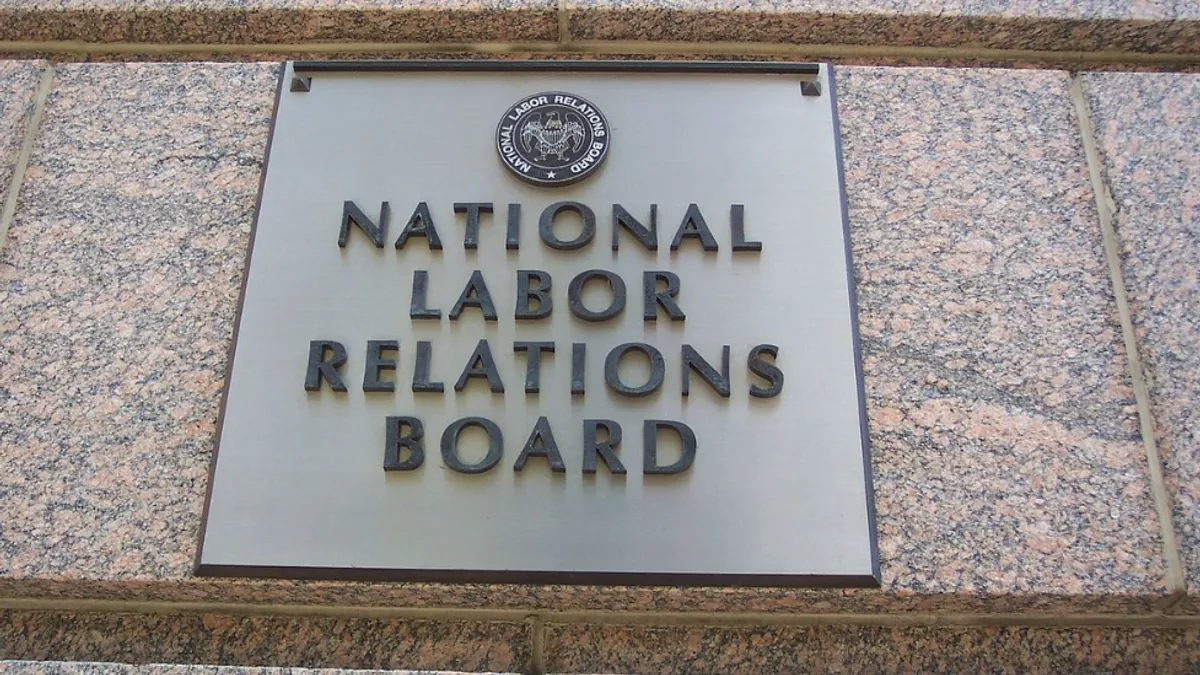Dive Brief:
- The National Labor Relations Board published Thursday a rule updating the standard for determining when multiple employers may be considered joint employers under the National Labor Relations Act.
- NLRB’s new joint employer rule retains much of the same details from its 2022 proposed rule, specifying that an entity may be considered a joint employer of another employer’s employees if the two share or codetermine essential terms and conditions of employment. Per the rule, joint employers may possess or exercise direct or indirect control over one or more essential terms and conditions of employment.
- Changes from the proposed rule include an exhaustive list of seven categories of employment terms or conditions that the board will consider essential for the purposes of its joint employer analysis, as well as a description of those it will consider “irrelevant” for such analysis. The final rule also addresses joint employers’ bargaining obligations. The rule is scheduled to be published in the Federal Register tomorrow; it will take effect 60 days after that.
Dive Insight:
NLRB’s final rule will essentially reinstate the standard articulated by the 2015 Obama-era board in Browning-Ferris Industries, a case that has been the center of a nearly decade-long employment law saga.
It also supplants NLRB’s recent joint employer rule, issued in 2020 under a Republican-majority board, which limited joint employer responsibilities to employers that possess and exercise direct and immediate control over essential employment terms.
Employer group Associated Builders and Contractors had supported the 2020 joint employer rule, and decried the change Thursday.
“Unfortunately, the Biden NLRB decided to dramatically expand joint-employer liability under the National Labor Relations Act, which will disrupt existing contractor and subcontractor relationships throughout the construction industry,” Ben Brubeck, ABC vice president of regulatory, labor and state affairs, said in a statement.
The new final rule specifies that essential terms and conditions of employment include:
- Wages, benefits and other compensation.
- Hours of work and scheduling.
- Assignment of duties.
- Supervision and performance of duties.
- Work rules and directions governing the manner, means and methods of performance as well as grounds for discipline.
- Tenure of employment, including hiring and discharge.
- Working conditions related to safety and health of employees.
Evidence of an employer’s control over matters that are “immaterial” both to the existence of a common-law employment relationship as well as control over matters that do not bear on essential employment terms and conditions, is not relevant to NLRB’s joint employer inquiry, per the rule.
“The Board’s new joint-employer standard reflects both a legally correct return to common-law principles and a practical approach to ensuring that the entities effectively exercising control over workers’ critical terms of employment respect their bargaining obligations under the NLRA,” NLRB Chairman Lauren McFerran said in a press release. “While the final rule establishes a uniform joint-employer standard, the Board will still conduct a fact-specific analysis on a case-by-case basis to determine whether two or more employers meet the standard.”
Zachary Phillips contributed to this story.











